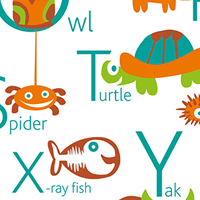Trắc nghiệm Reading tiếng Anh lớp 12 Unit 5 Cultural Identity
Nối tiếp bộ tài liệu Bài tập tiếng Anh lớp 12 chương trình mới theo từng kỹ năng, Đề ôn tập kỹ năng đọc (Reading) tiếng Anh Unit 5 có đáp án dưới đây được biên tập xoay quanh chủ đề bài học Cultural Identity (Bản sắc văn hóa) giúp các em học sinh lớp 12 rèn luyện kỹ năng làm bài thi hiệu quả cũng như tích lũy thêm nhiều Từ vựng - Ngữ pháp tiếng Anh theo chủ đề bài học Unit 5 tiếng Anh lớp 12.
Trắc nghiệm tiếng Anh 12 Unit 5 Cultural Identity có đáp án
Tài liệu ôn tập tiếng Anh Unit 5 lớp 12 Cultural Identity phần Reading có đáp án dưới đây nằm trong bộ đề Trắc nghiệm tiếng Anh 12 theo Unit do VnDoc.com sưu tầm và đăng tải. Đề luyện tập tiếng Anh 12 unit 5 Cultural Identity gồm dạng bài tập tiếng Anh 12 như: Đọc đoạn văn tìm câu trả lời chính xác.
Bài 1. Read the following passage and mark the letter A, B, C, or D on your answer sheet to indicate the correct answer to each of the questions.
Although noise, commonly defined as unwanted sound, is a widely recognized form of pollution, it is very difficult to measure because the discomfort experienced by different individuals is highly subjective and, therefore, variable. Exposure to lower levels of noise may be slightly irritating, whereas exposure to higher levels may actually cause hearing loss. Particularly in congested urban areas, the noise produced as a byproduct of our advancing technology causes physical and psychological harm, and detracts from the quality of life for those who are exposed to it.
Unlike the eyes, which can be covered by the eyelids against strong light, the ear has no lid, and is, therefore, always open and vulnerable; noise penetrates without protection. Noise causes effects that the hearer cannot control and to which the body never becomes accustomed. Loud noises instinctively signal danger to any organism with a hearing mechanism, including human beings. In response, heartbeat and respiration accelerate, blood vessels constrict, the skin pales, and muscles tense. In fact, there is a general increase in functioning brought about by the flow of adrenaline released in response to fear, and some of these responses persist even longer than the noise, occasionally as long as thirty minutes after the sound has ceased.
Because noise is unavoidable in a complex, industrial society, we are constantly responding in the same way that we would respond to danger. Recently, researchers have concluded that noise and our response may be much more than an annoyance. It may be a serious threat to physical and psychological health and well-being, causing damage not only to the ear and brain but also to the heart and stomach. We have long known that hearing loss is America's number one nonfatal health problem, but now we are learning that some of us with heart disease and ulcers may be victims of noise as well. Fetuses exposed to noise tend to be overactive, they cry easily, and they are more sensitive to gastrointestinal problems after birth. In addition, the psychic effect of noise is very important. Nervousness, irritability, tension, and anxiety increase affecting the quality of rest during sleep, and the efficiency of activities during waking hours, as well as the way that we interact with each other.
Question 1: Which of the following is the author's main point?
A. Hearing loss is America's number one nonfatal health problem.
B. Loud noises signal danger.
C. Noise may pose a serious threat to our physical and psychological health.
D. The ear is not like the eye.
Question 2: According to the passage, what is noise?
A. byproduct of technology.
B. Physical and psychological harm
C. Congestion.
D. Unwanted sound.
Question 3: Why is noise difficult to measure?
A. All people do not respond to it in the same way
B. It causes hearing loss.
C. It is unwanted.
D. People become accustomed to it.
Question 4: The word ‘congested’ in paragraph 1 could best be replaced by ___.
A. hazardous
B. crowded
C. polluted
D. rushed
Question 5: The word it in the first paragraph refers to ___.
A. the quality of life
B. advancing technology
C. the noise
D. physical and psychological harm
Question 6: According to the passage, people respond to loud noises in the same way that they respond to ___.
A. annoyance
B. danger
C. damage
D. disease
Question 7: Look at the verb accelerate in paragraph 3. Which of the following is the closest in meaning to _____.
A. decrease
B. alter
C. increase
D. release
Question 8: The phrase ‘as well as’ in paragraph 4 is closest in meaning to ___.
A. after all
B. instead
C. also
D. regardless
Question 9: It can be inferred from the passage that the eye ___.
A. responds to fear
B. enjoys greater protection than the ear
C. increases functions
D. is damaged by noise
Đáp án
| 1. C | 2. D | 3. A | 4. B | 5. C |
| 6. B | 7. C | 8. C | 9. B |
Bài 2. Read the following passage and mark the letter A, B, C or D to indicate the correct answer to each of the questions.
In the Native American Navajo nation which sprawls across four states in the American south-west, the native language is dying. Most of its speakers are middle-age or elderly. Although many students take classes in Navajo, the schools are run in English. Street sign, supermarket goods and even their own newspaper are all in English. Not surprisingly, linguists doubt that any native speakers of Navajo will remain in a hundred years' time.
Navajo is far from alone. Half the world's 6,800 languages are likely to vanish within two generations - that's one language lost every ten days. Never before has the planet's linguistic diversity shrunk at such a pace. Isolation breeds linguistic diversity as a result, the world is peppered with languages spoken by only a few people. Only 250 languages have more than a million speakers, and at least 3,000 have fewer than 2,500. It is not necessarily these small languages that are about to disappear. Navajo is considered endangered despite having 150,000 speakers. What makes a language endangered is not that the number of speakers, but how old they are. If it is spoken by children it is relatively safe. The critically endangered languages are those that are only spoken by the elderly, according to Michael Krauss, director of the Alaska Native Language Center, in Fairbanks.
Why do people reject the language of their parent? It begins with a crisis of confidence, when a small community finds itself alongside a larger, wealthier society, says Nicholas Ostler of Britain's Foundation for Endangered Languages, in Bath. “People lose faith in their culture” he says. "When the next generation reaches their teens, they might not want to be induced into the old tradition.” The change is not always voluntary. Quite often, governments try to kill off a minority language by banning its use in public or discouraging its use in school, all to promote national unity. The former US policy of running Indian reservation in English, for example, effectively put languages such as Navajo on the danger list. But Salikoko Mufwene, who chairs the Linguistics Department at the University of Chicago, argues that the deadliest weapon is not government policy but economic globalisation. "Native Americans have not lost pride in their language, but they have had to adapt to socio-economic pressures" he says. “They cannot refuse to speak English if most commercial activity is in English."
However, a growing interest in cultural identity may prevent the direct predictions from coming true. ‘The key to fostering diversity is for people to learn their ancestral tongue, as well as the dominant language' says Doug Whalen, founder and president of the Endangered Language Fund in New Haven, Connecticut. “Most of these will live without a large degree of bilingualism” he says.
Question 1: It is stated in the passage that the number of endangered languages is ____.
A. about 3,200
B. about 6,800
C. at least 3,000
D. fewer than 2,500
Question 2: The word peppered in paragraph 2 is closest in meaning to ____.
A. randomly separated
B. slowly attacked
C. sparsely distributed
D. unintentionally controlled
Question 3: According to the passage, endangered languages cannot be saved unless people
A. avoid speaking their dominant language
B. grow interest in cultural identities
C. know more than one language
D. write in their mother tongue
Question 4: Who thinks that a change of language may mean a loss of traditional culture?
A. Doug Whalen
B. Michael Krauss
C. Nicholas Ostler
D. Salikoko Mufwene
Question 5: The word these in paragraph 5 refers to ____.
A. ancestral tongue
B. dominant language
C. growing interest in cultural identity
D. the key to fostering diversity
Question 6: Navajo language is considered being endangered language because ____.
A. it currently has too few speakers
B. it is spoken by too many elderly and middle-aged speakers
C. it was banned in publicity by the former US policy
D. many young people refuse to learn to speak it
Đáp án:
| 1. A | 2. C | 3. C | 4. D | 5. A | 6. A |
Read the passage and do the tasks below
Nowadays, amid the storming development of high-tech devices such as smartphones or e-book readers, people seem to neglect the existence of certain inventions that date back thousands of years. One of those is the mirror.
People grew a desire to see themselves as they saw their reflections in the surface of water. Around the 600s BC, the first mirrors were made from natural materials such as polished stones. After a while, people started to use bronze, gold and silver to make mirrors. These metals were heavy, so mirrors had very modest sizes. Ruling-class people, especially ladies, used them as a fashionable accessory. Hardly did they go out without a mirror. In the 1st century, the first glass mirrors were invented by the Romans and were made bigger to allow people to look at the whole body. However, not everyone cherished the mirror. Some people were irritated to find themselves ugly looking at the mirror, and there were rumors that what they saw in the mirror were reflections of sins and demons.
Nowadays, despite technological advancement, mirrors still play important roles in various modern-day fields, such as surgery, transport, architecture and so on. In fact, mirrors are utilised in technology and have inspired the inventions of several devices such as cameras or satellites.
1. When were the first mirrors made?
A. In the first century B. In the 600s B.C. C. Four thousand years ago
2. What were the first materials for making mirrors?
A. Stones B. Glass C. Metal such as bronze, gold and silver
3. What was TRUE about metal mirrors?
A. They were very heavy. B. They were small. C. They were extremely expensive.
4. What was TRUE about glass mirrors?
A. They were cheaper than metal mirrors.
B. They were not favored because they broke easily.
C. They were bigger than metal mirrors.
5. Who used mirrors as a fashion item?
A. Girls and women from powerful families
B. Girl and women from all families
C. Young and unmarried girls
Đáp án
1 - B; 2 - A; 3 - B; 4 - C; 5 - A;
Trên đây là Bài tập tiếng Anh lớp 12 Unit 5 Cultural Identity Reading kèm đáp án. Mời bạn đọc tham khảo thêm nhiều tài liệu ôn tập Tiếng Anh 12 khác như: Để học tốt Tiếng Anh lớp 12, Bài tập Tiếng Anh lớp 12 theo từng Unit trực tuyến, Đề thi học kì 1 lớp 12, Đề thi học kì 2 lớp 12,... được cập nhật liên tục trên VnDoc.com.

















